There is something beautiful about a knot.
Maybe it’s knowing that this thing, tightly wound and intricate, was once straight, useful, and at its worst would only curve or bend. There was comfort in the idea that you could see from one end of this line to the next and perhaps some old, obscure reliability in that. But reliability, comfort and calculability rarely create scenarios that equate to beauty. It’s the unforeseen, the surprises, the complications and the kinks in the rope that make stories worth telling, and their words worthy of our busied ears.
There is also utility in a knot. It can hold, it can catch, and it can gather … a seemingly impossible amount of times. Fold upon fold, layer upon layer, bend atop bend, the simple reality of a knot is analogous to the layers of experience that render a human life. On one hand our “knots” make us who we are; they give us a reason to learn about dimensionality, from the highest heights in our observations of our world to the furthest reaches of one’s inner space, where most dare not to tread for fear of what and who one really is once they’ve arrived at the place where the rope is uncoiled.
On the other hand they engender in us a longing to unwind, to untie the countless layers that have amassed over a lifespan, and in that lies the glowing, beautiful potential for redemption out of and from the thing we least intended to become. Once undone, we can dance in that untethered fringe — if only for a moment, for the likelihood is high that new complications will arrive and stick to the kinks in us that we had overlooked. Maybe this is what I’ve been pointing at for all of these years.
I’ve been drawing and painting intersecting lines and colliding topographies since I was a kid. It felt obsessive and repetitious, but it also always felt vitally important for me to see where the lines took me. It’s only been in the last few years that I’ve come to understand that these miniature highways that folded onto themselves and encapsulated renditions of people I know (and or knew) were my own spiritual, emotional and intellectual knots. By letting them out onto canvas I have been in a kind of ritual dance wherein I am both the Lassoer and the Lassoed: the fingers that weave the hair, but also the fiber and the braid. My hand and the brush are the marlinspike interpreting what feels like a geyser of string spewing forth from the deep.
So!
It seems appropriate to call this newest body of work "Impossible Knots.” Not because I accept them in their coiled, confused and chaotic present, but because it’s implicit in the word "impossible" to find out what is possible once those spiraling snags are loosed.
Brandon Boyd

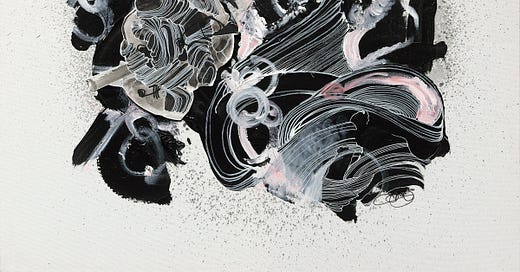




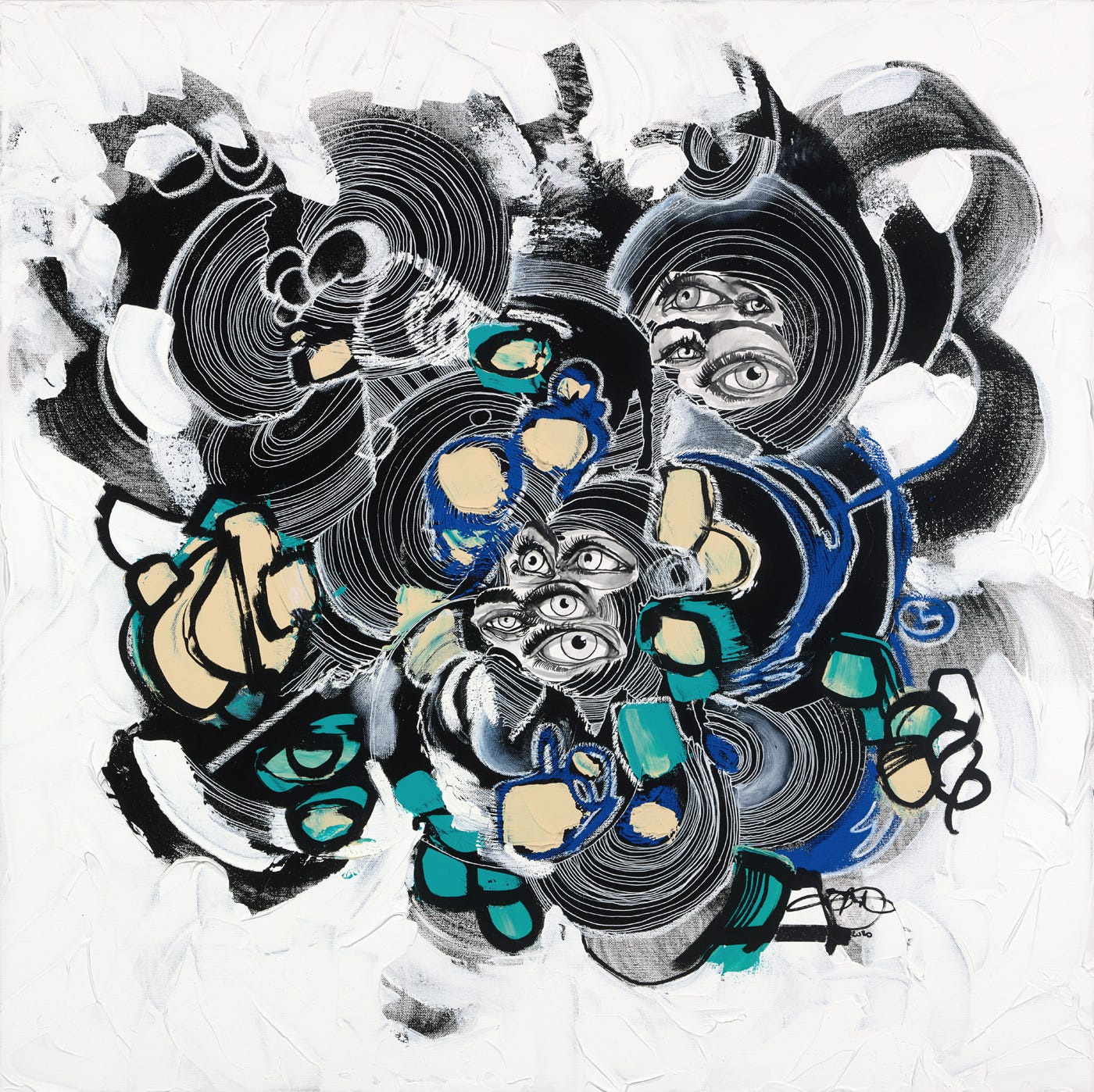
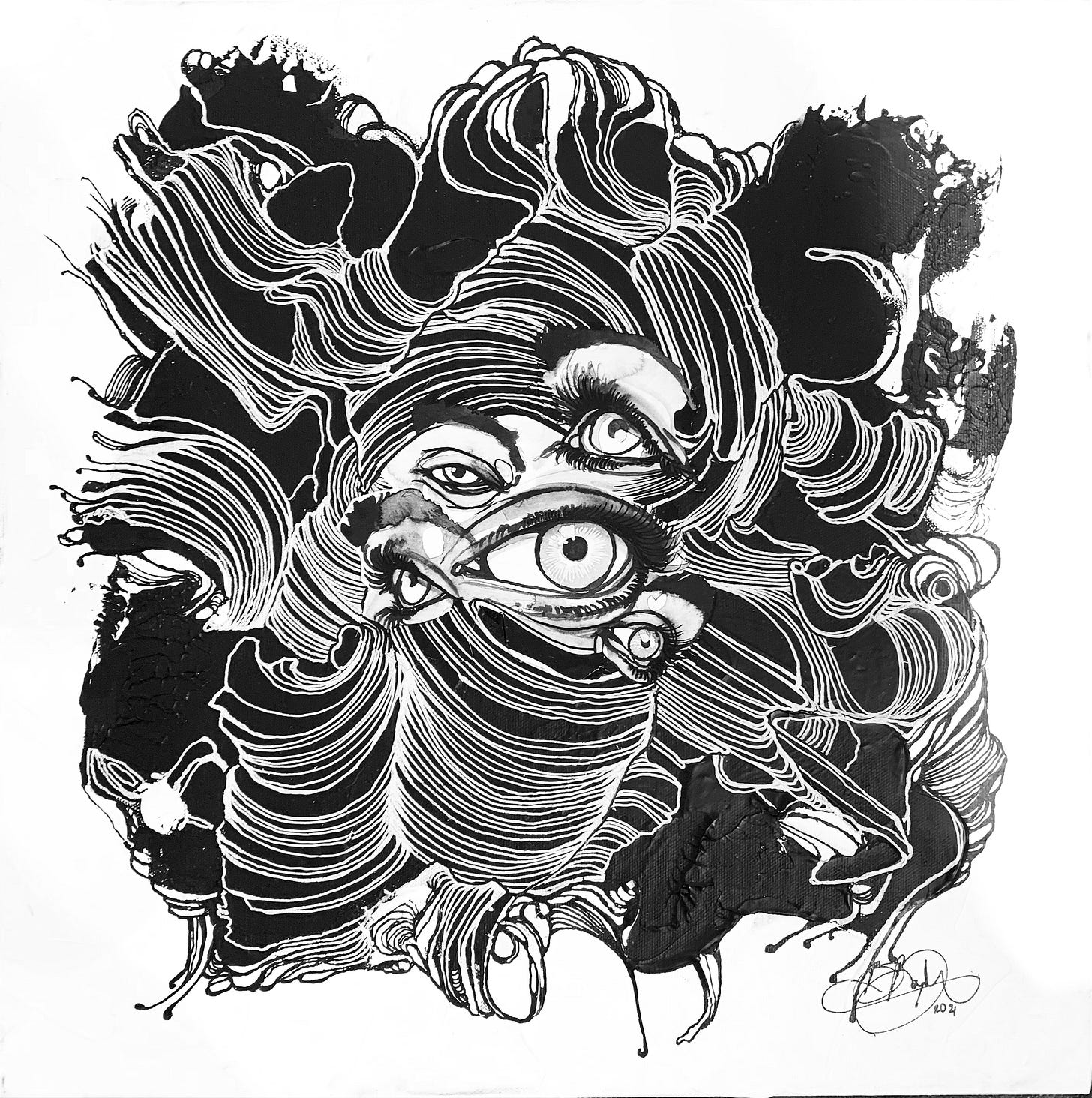

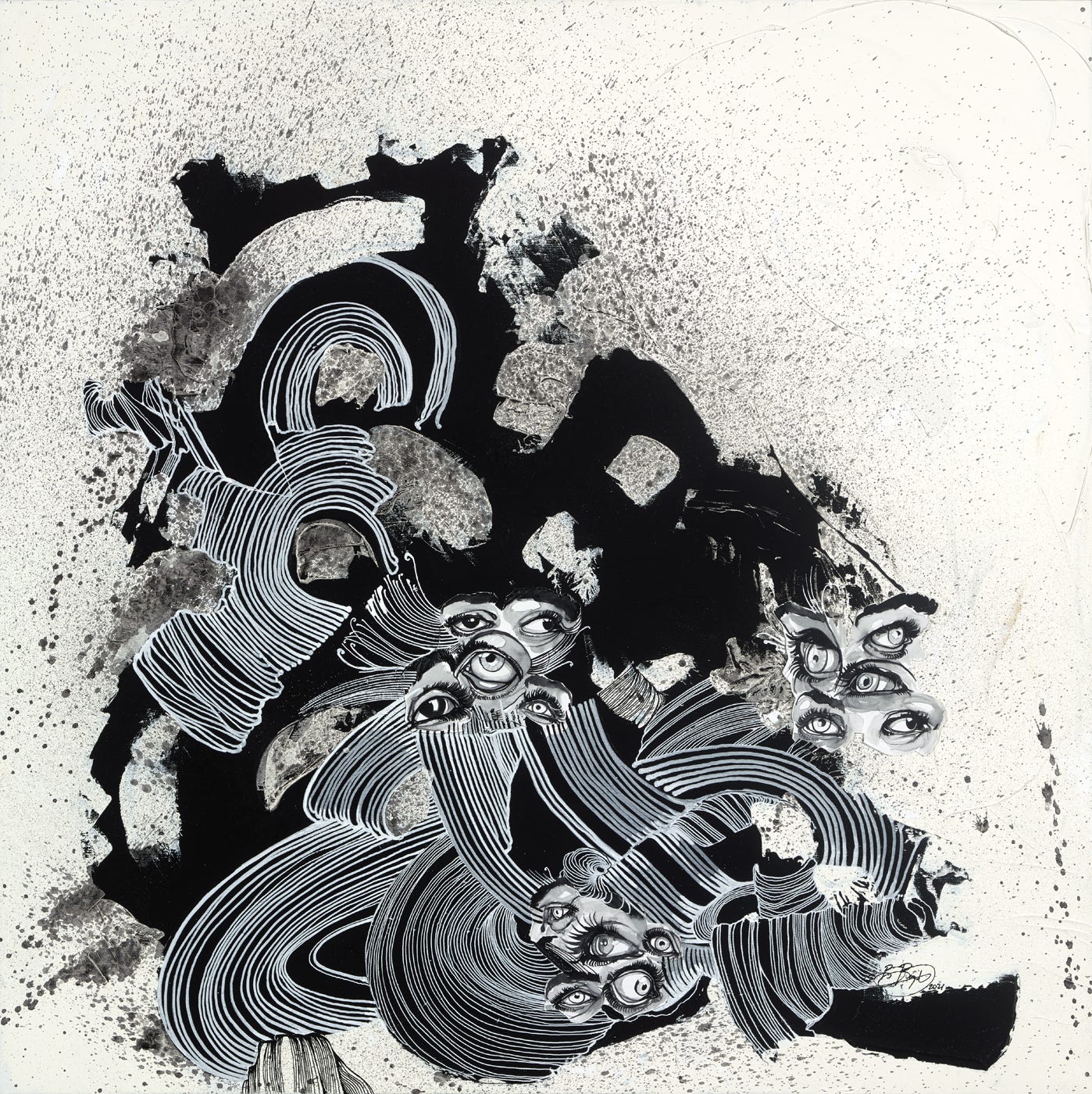
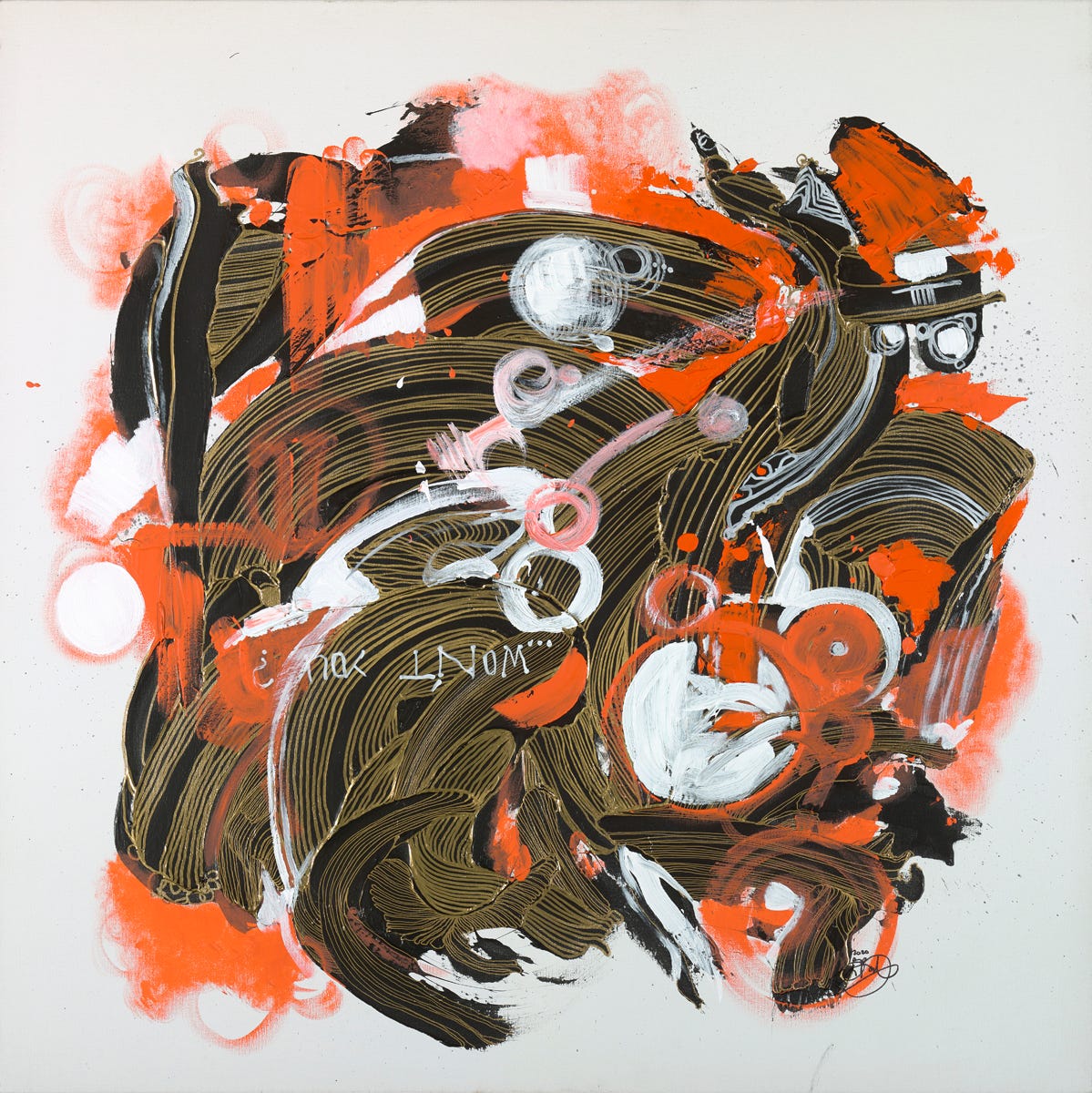
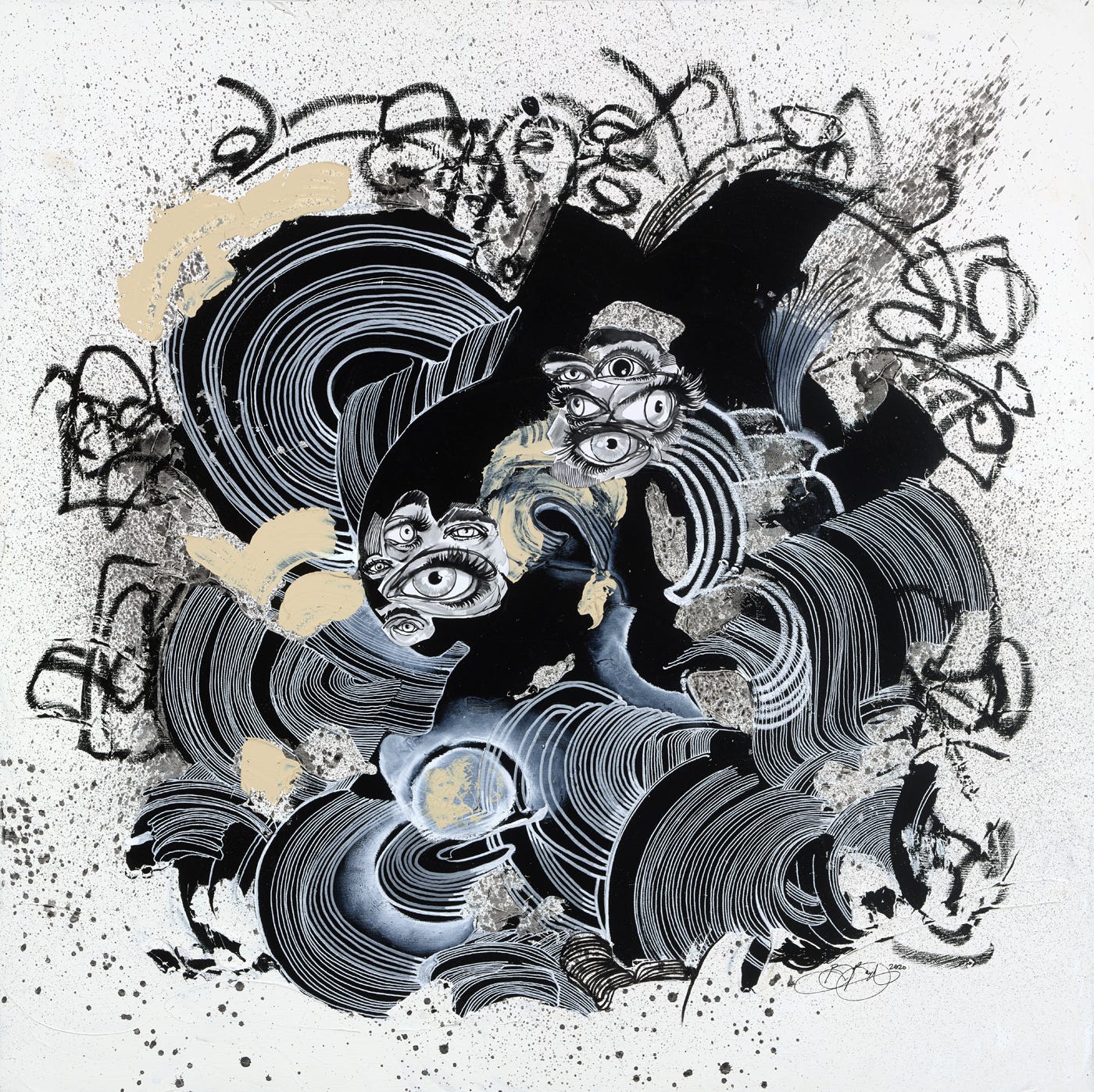

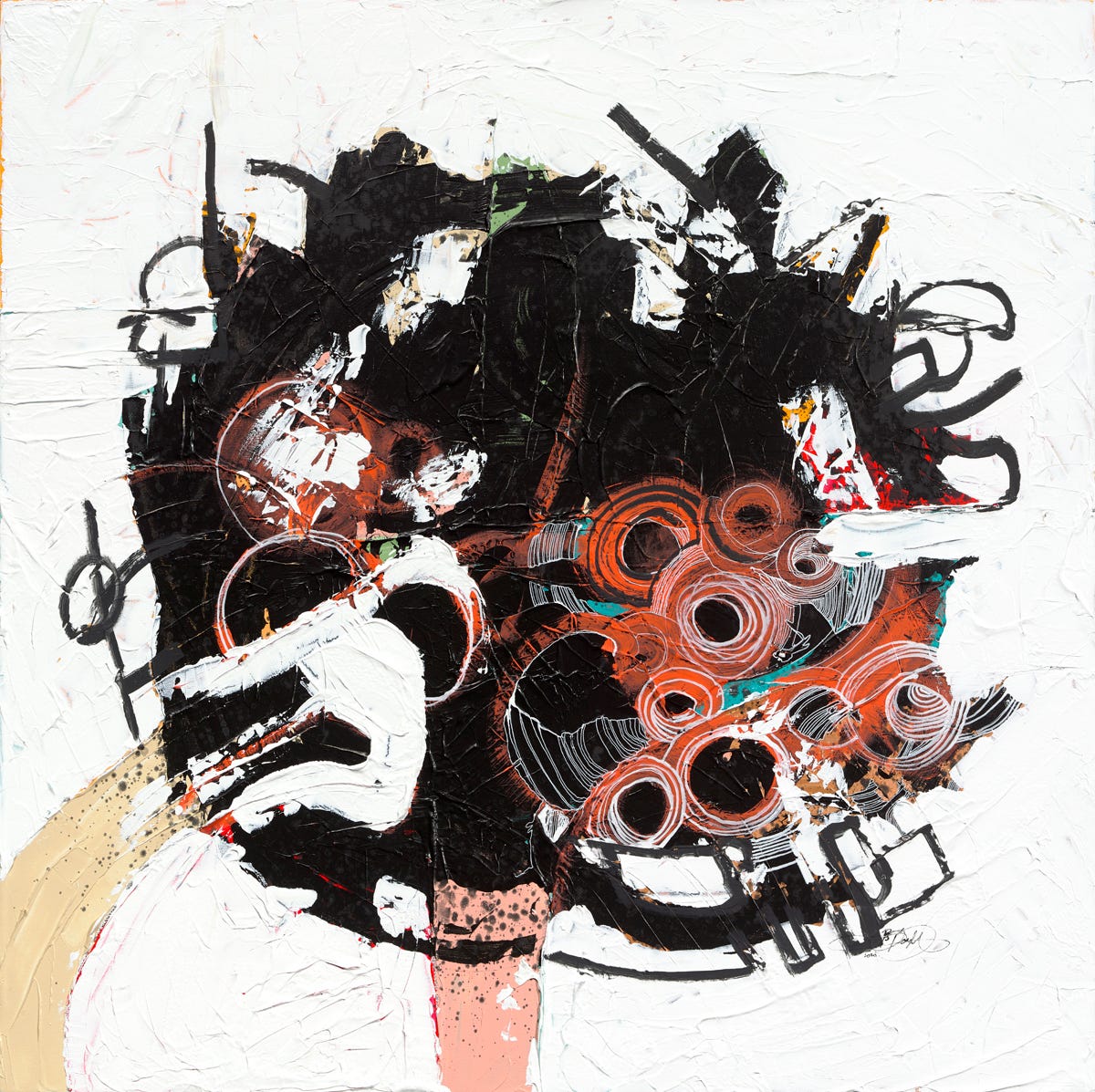
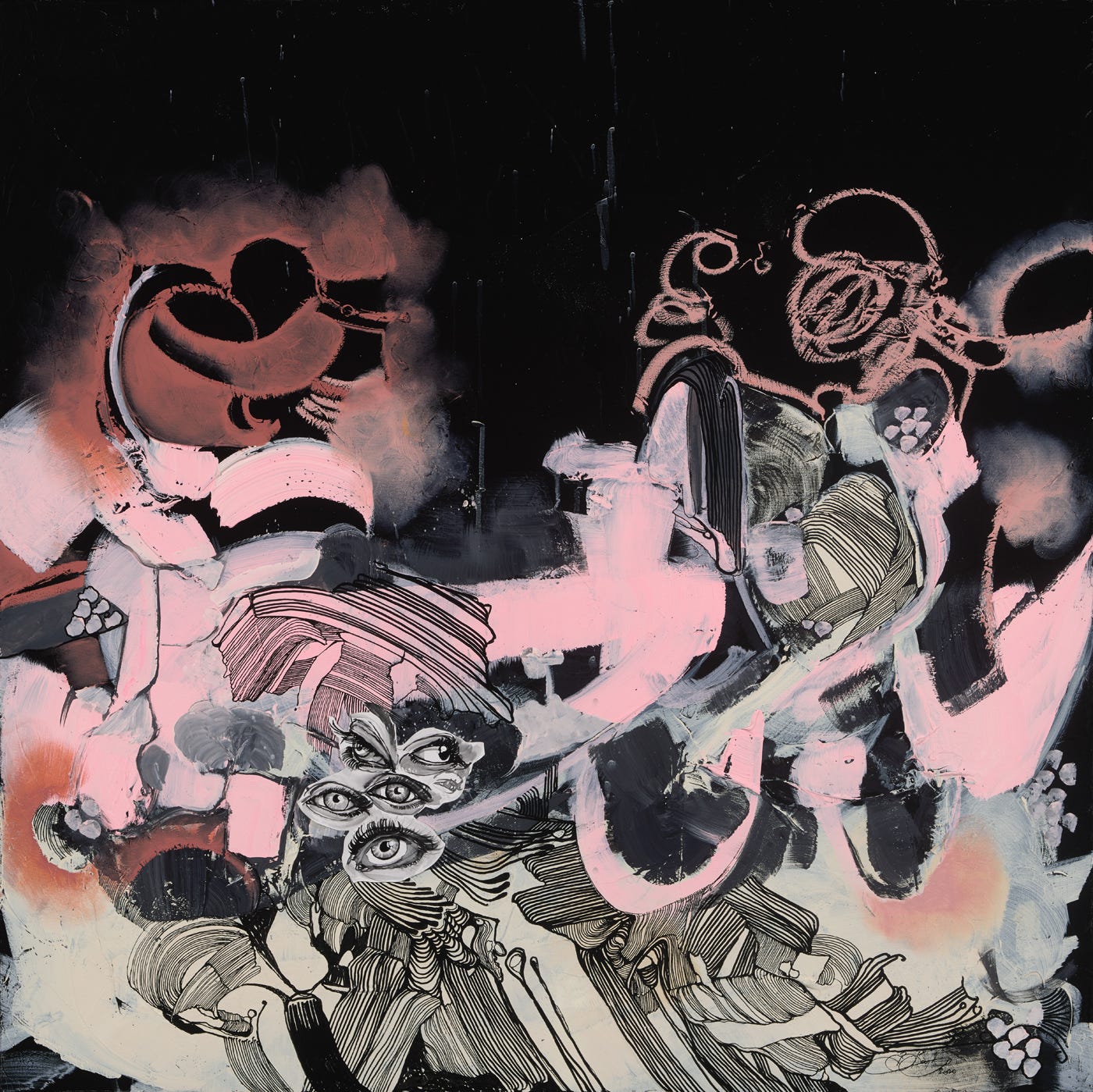
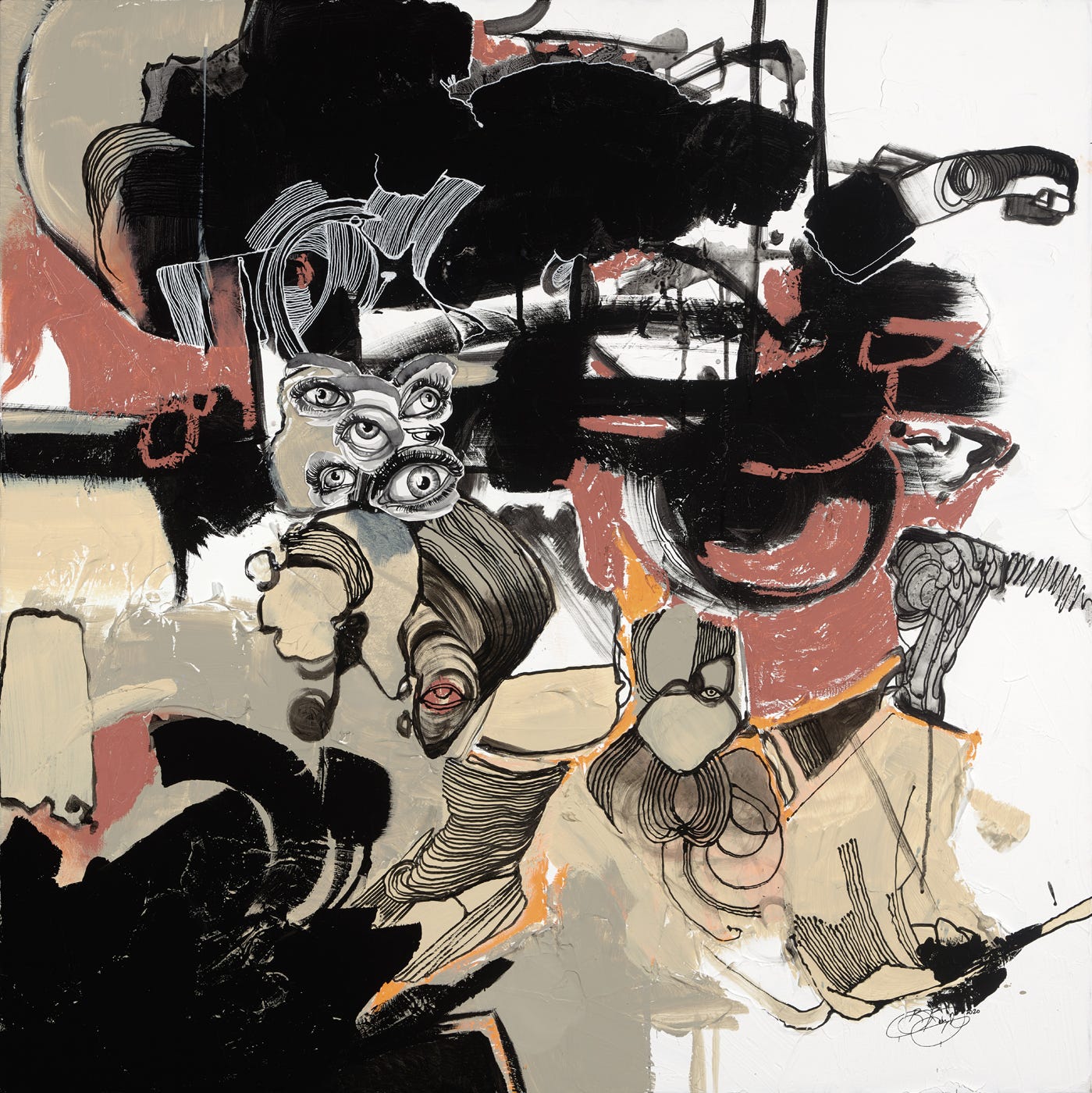

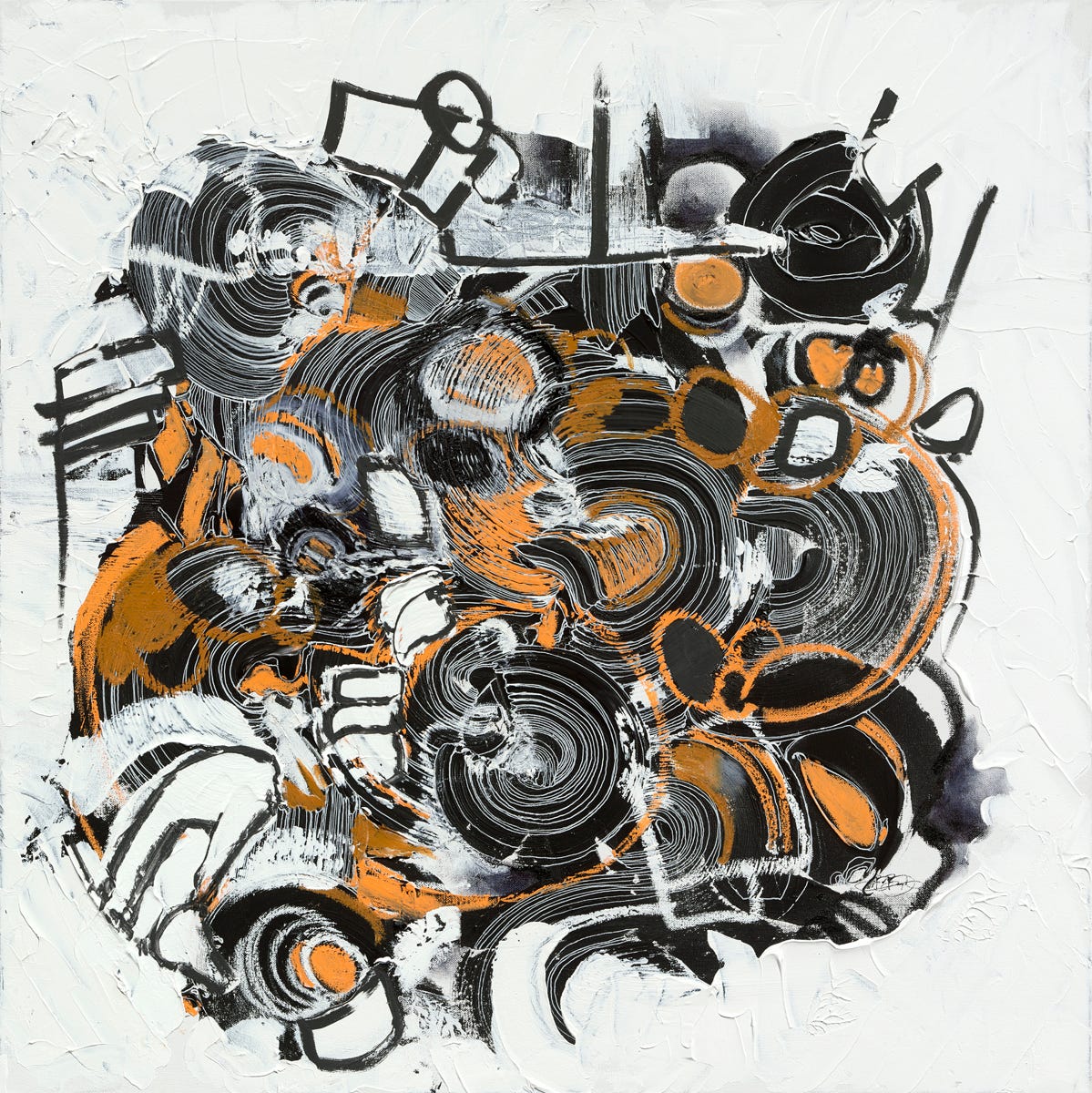
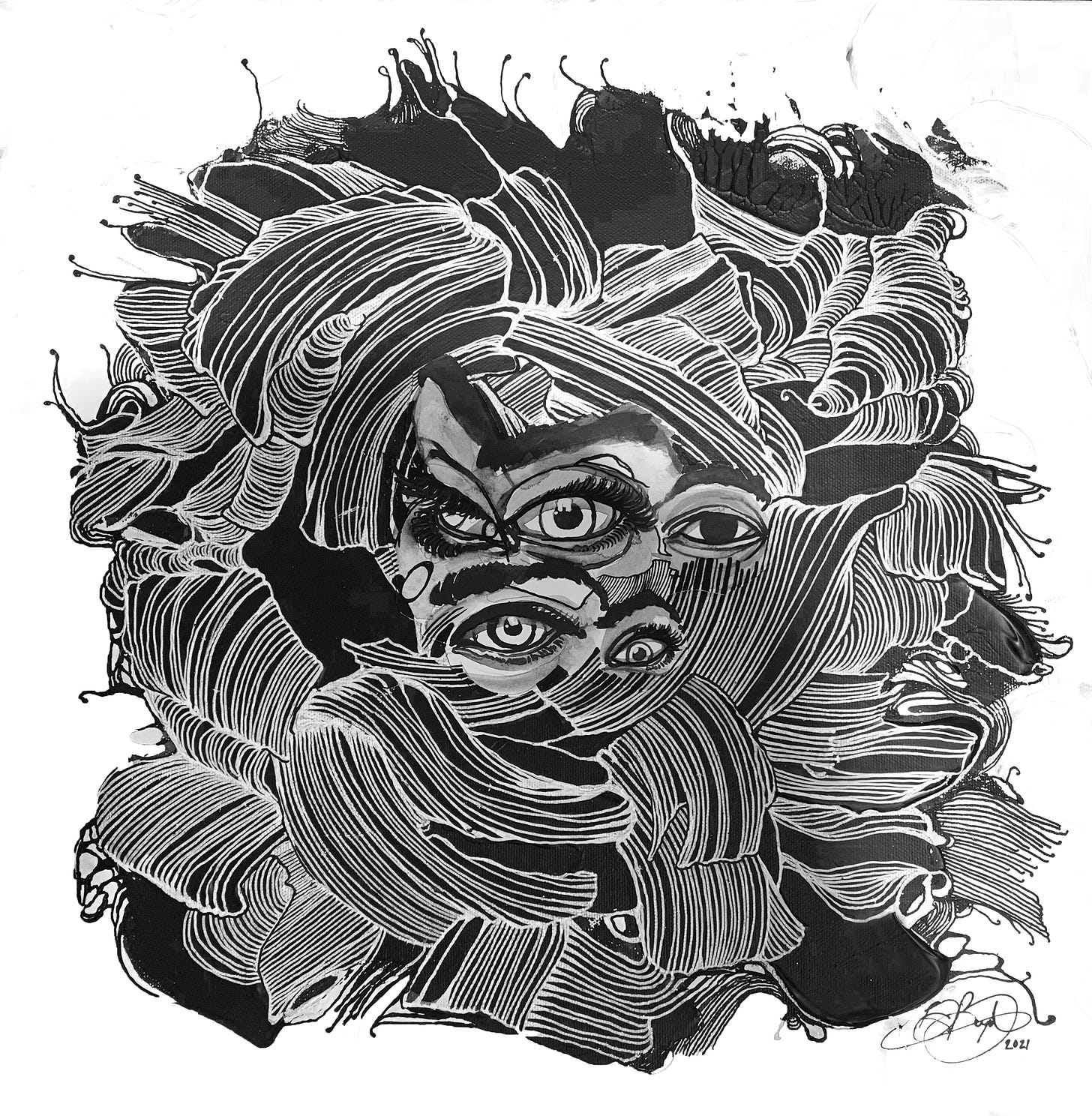
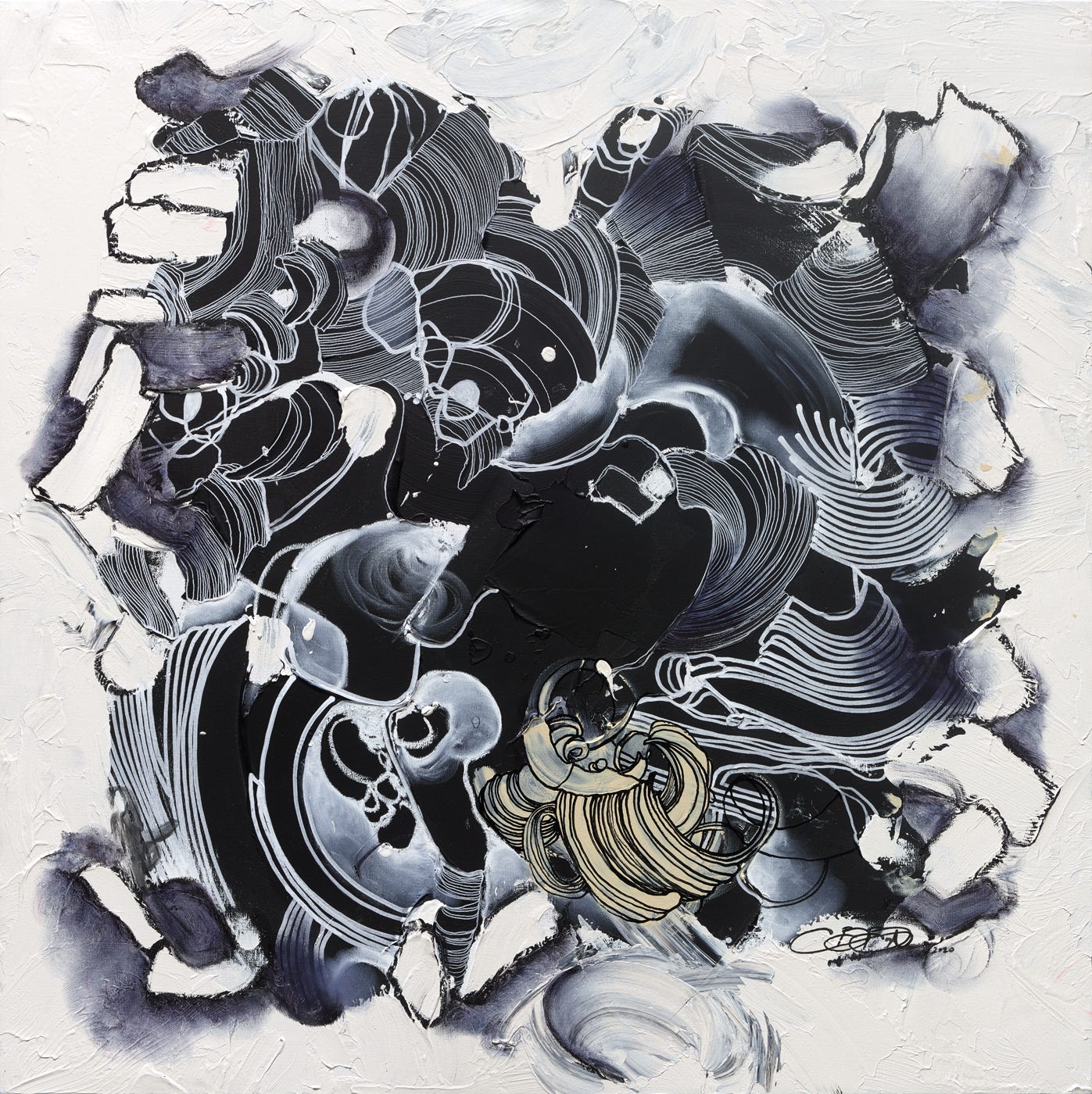
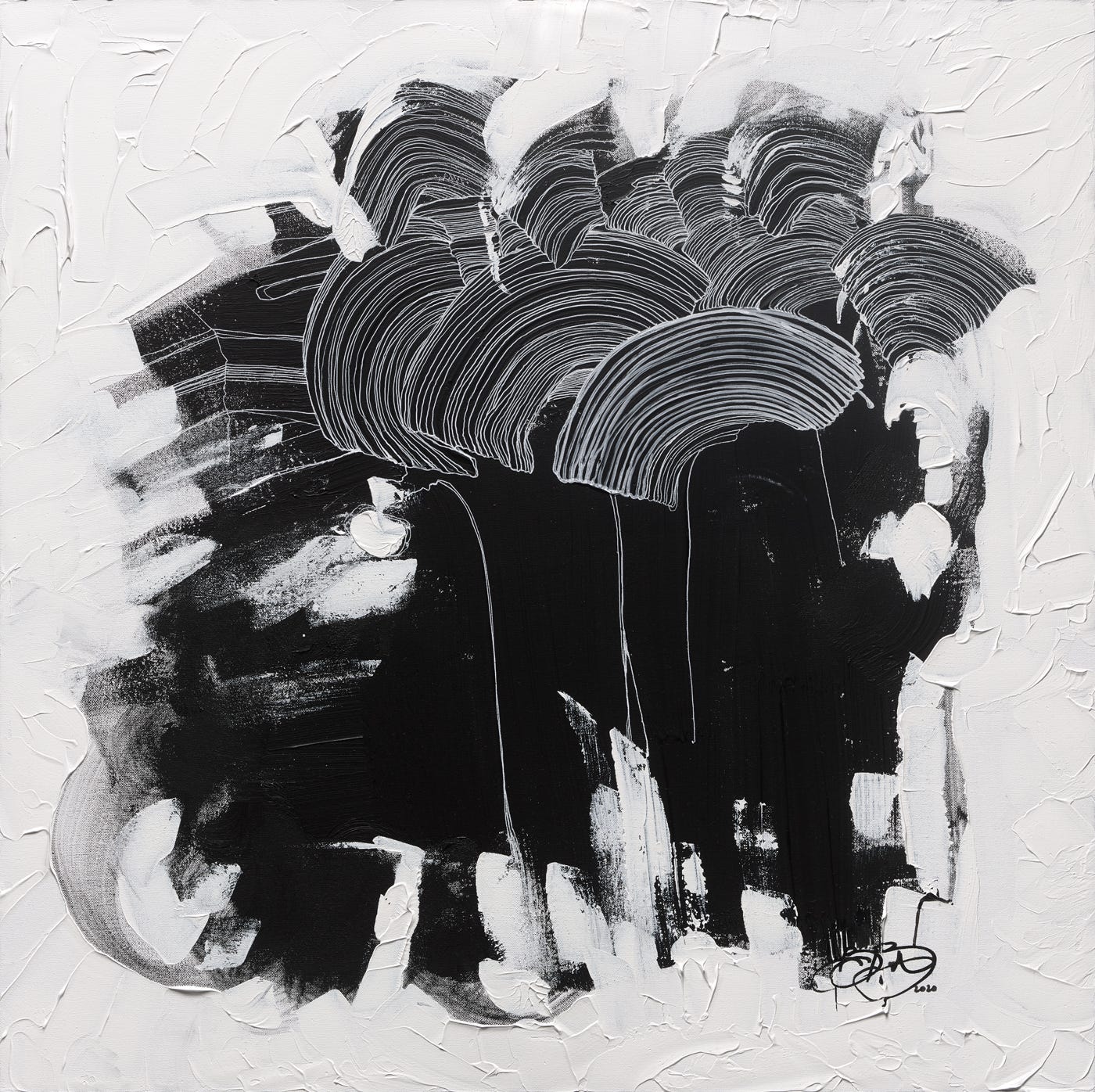
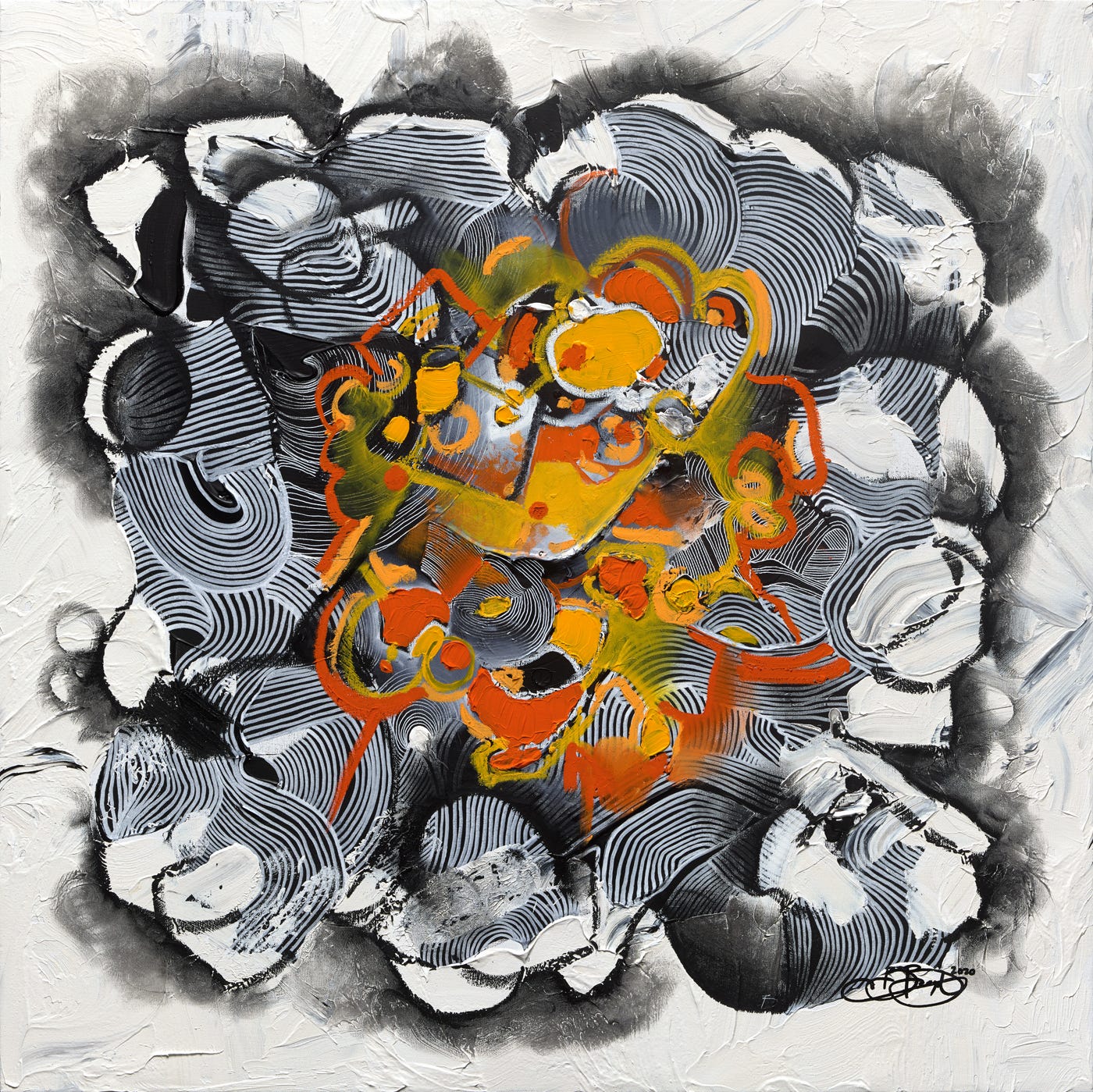
As I read this post and hear the words ritual dance, my mind fills with your physical performance when you sing. Your hands and body follow similar patterns. It may be something you don’t even realize or haven’t considered. Your natural movement while performing mimics your knot paintings-your hand gestures, how you fold onto a speaker. There are straight lines, twists, folds and other forms that I can see creating a knotting. It’s pretty incredible to see the parallel.
These pieces are so hypnotic and beautiful. There is indeed beauty in chaos 💖 and so many layers, just like the strings that tie a knot together.